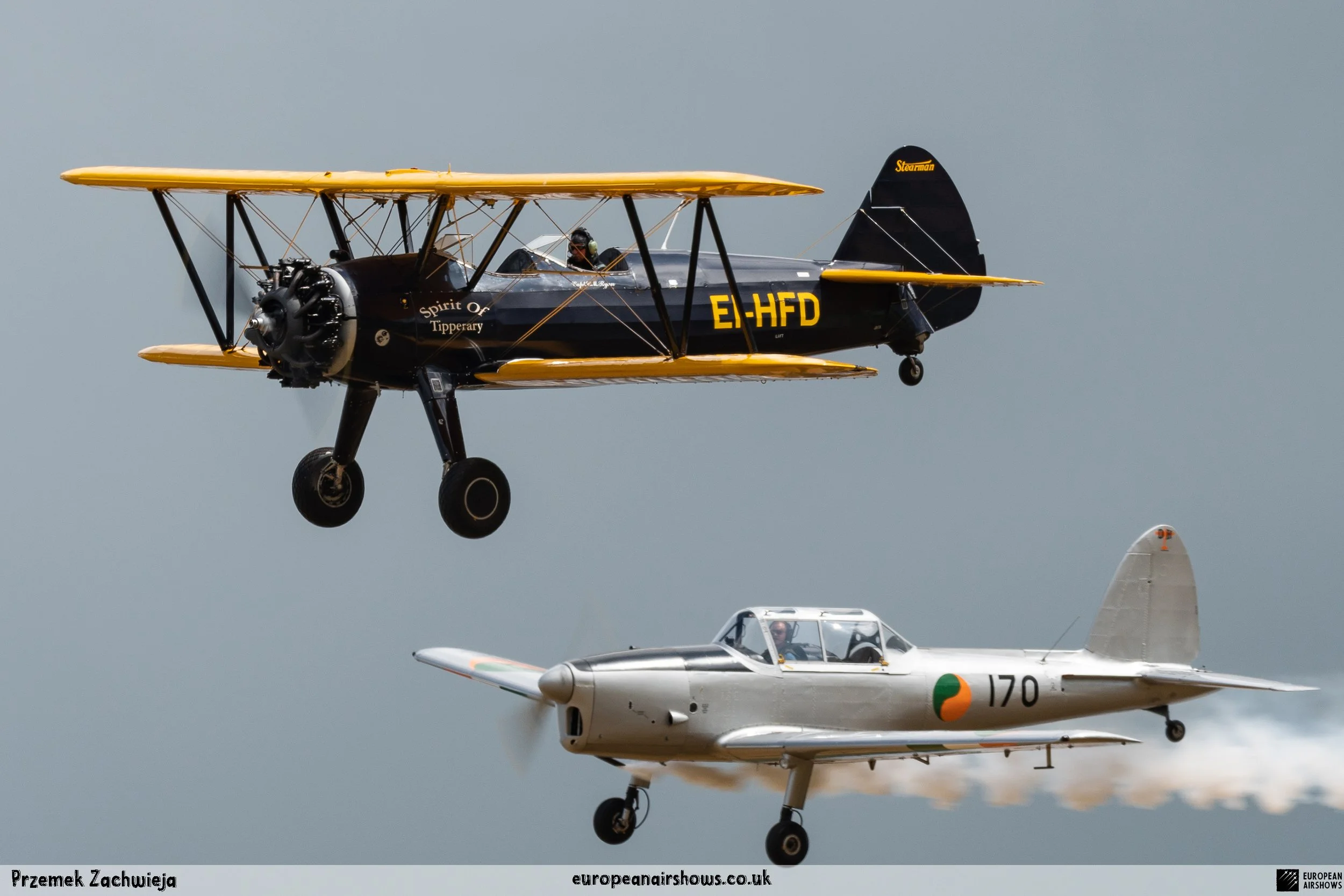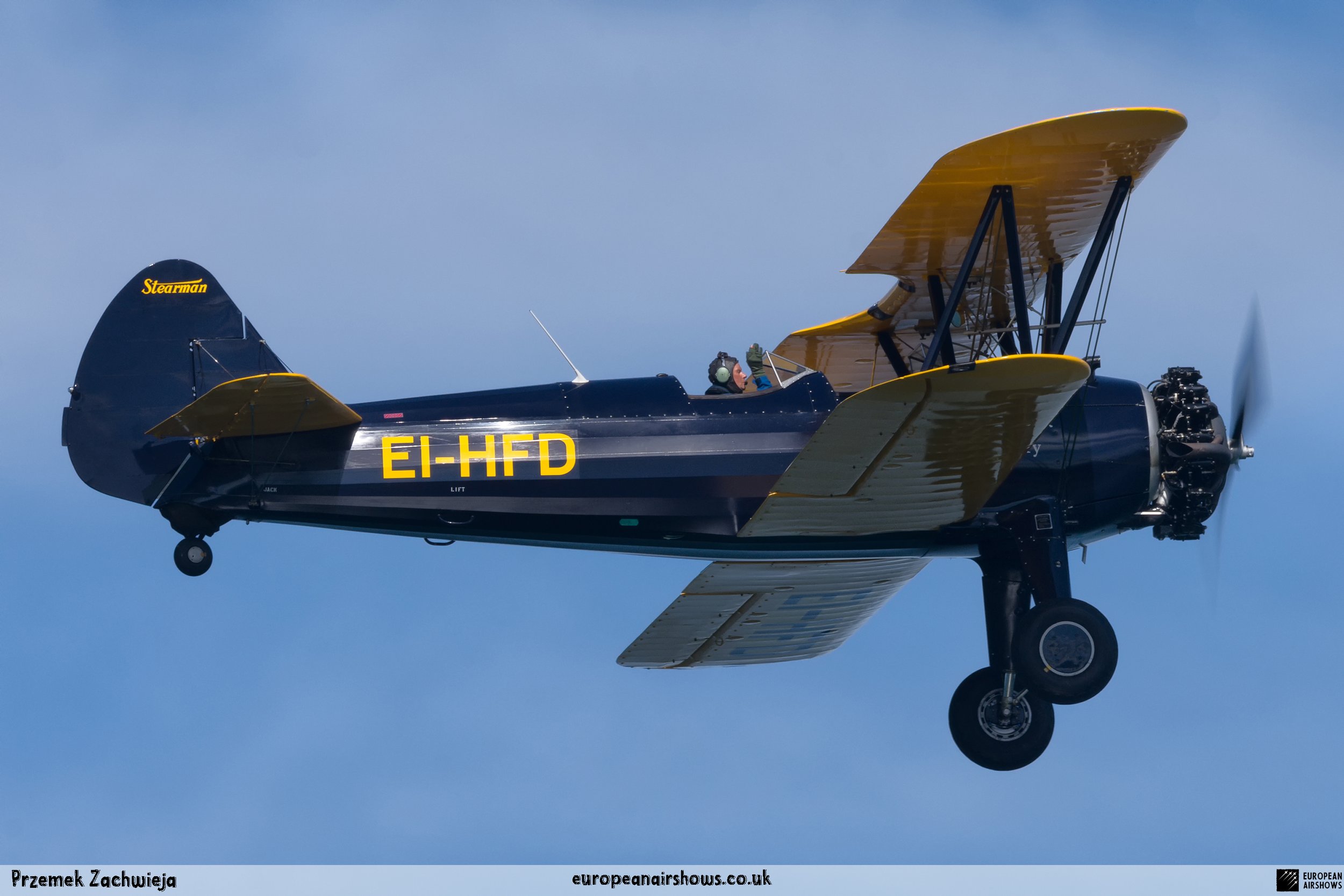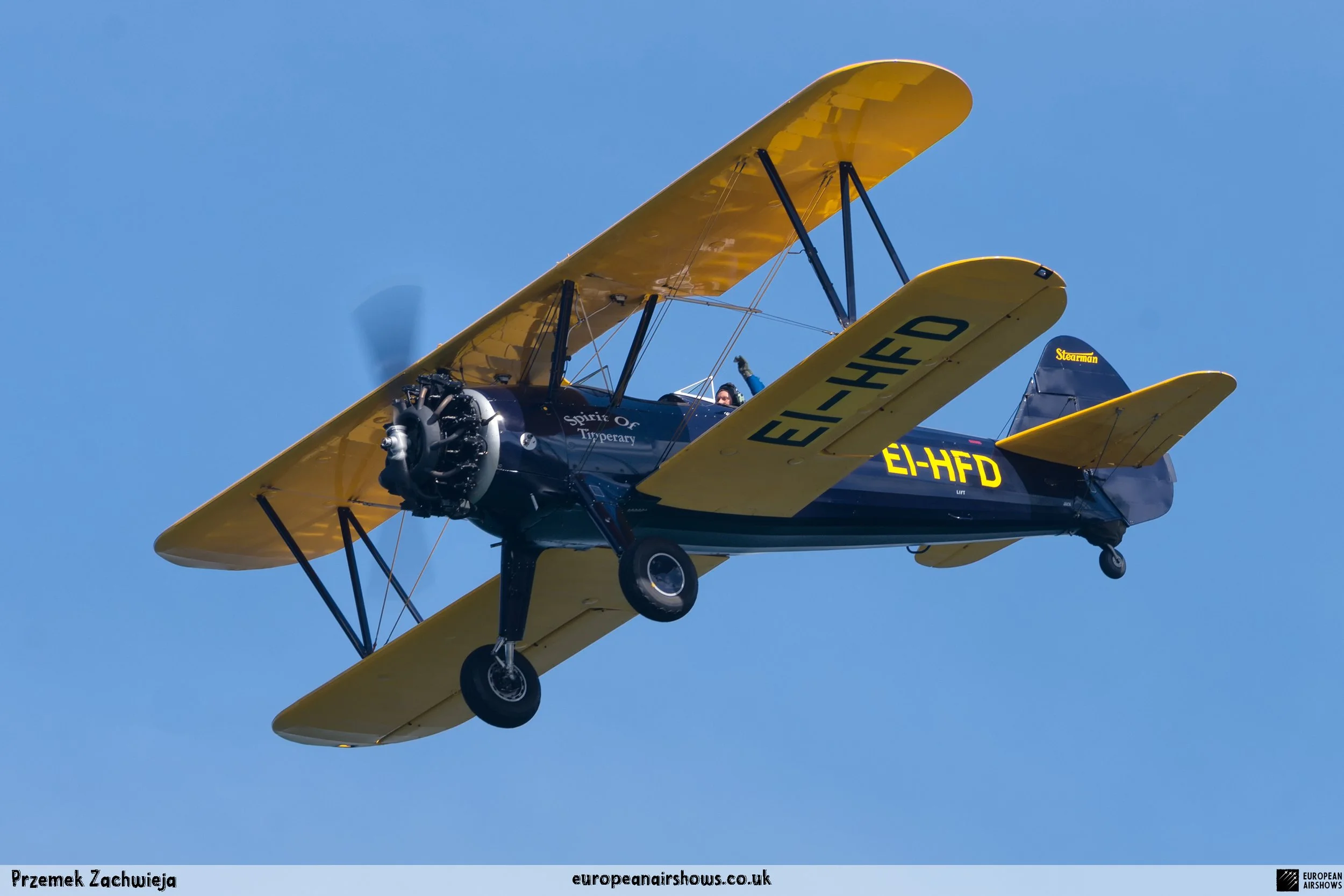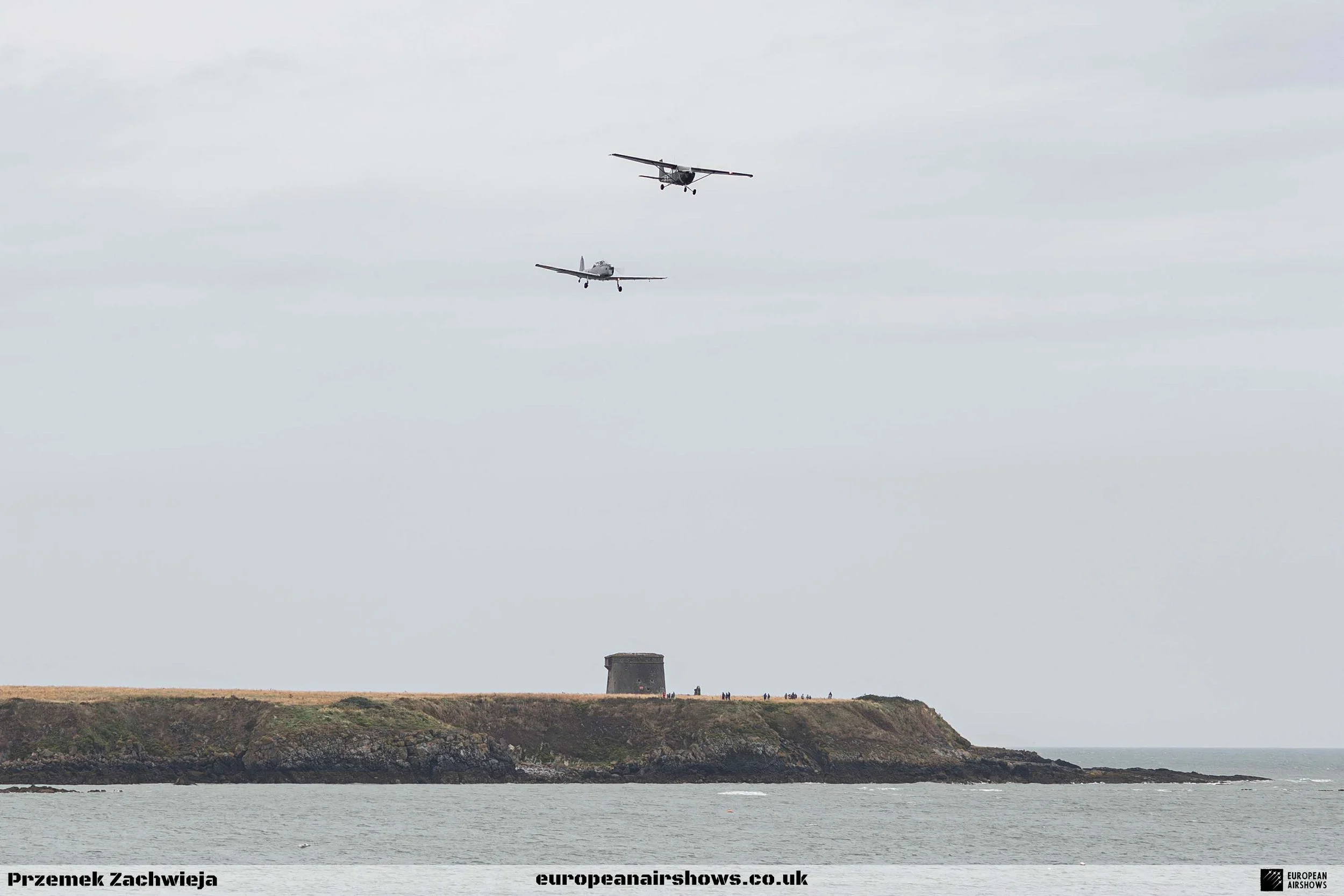
Irish Historic Flight Foundation
About the Team
The Irish Historic Flight Foundation (IHFF) is a not-for-profit organisation dedicated to preserving and celebrating Ireland’s rich aviation heritage. Supported by prominent industry partners including ASL Aviation Holdings, the Irish Air Corps, the Department of Defence, Ryanair, Aer Lingus, and the Irish Aviation Authority, the Foundation operates through the efforts of a dedicated team of volunteers. IHFF maintains a fleet of historic aircraft, which includes three De Havilland Chipmunks adorned in classic Irish Air Corps livery, a Boeing Stearman named “Spirit of Tipperary,” and the Reims Rocket (Cessna) FR.172H Skyhawk II added in 2023. These aircraft regularly participate in aviation gatherings across Ireland, captivating audiences with both solo performances and meticulously executed formation displays involving up to four planes.
Team Overview
Number of Aircraft
5
Established
2014
Based
Ballyboy Airfield
Aircraft Type
Chipmunk / Stearman / Reims Rocket FR.172H Skyhawk II
About the Aircraft
De Havilland ChipmunkThe de Havilland Canada DHC-1 Chipmunk, affectionately known as the “Chippie,” is a tandem two-seat, single-engined primary trainer aircraft designed by de Havilland Canada shortly after the Second World War. Performing its maiden flight on 22 May 1946, the Chipmunk was introduced to operational service in the same year and quickly became a staple in military flight training programs worldwide. It served extensively with air forces including the Royal Canadian Air Force (RCAF) and the Royal Air Force (RAF), replacing the de Havilland Tiger Moth biplane as the standard primary trainer. Produced under license in the United Kingdom and Portugal, the Chipmunk was renowned for its excellent flying characteristics and suitability for aerobatic manoeuvres, which extended its use into civilian aviation after military service. Today, numerous Chipmunks remain airworthy globally, with the Irish Historic Flight Foundation operating three Chipmunks in the classic Irish Air Corps livery, frequently showcasing the aircraft’s legacy at aviation events across Ireland.
Boeing Stearman Model 75The Boeing Stearman Model 75, commonly referred to as the Stearman or Kaydet, is an American biplane that served as a primary trainer aircraft during the 1930s and 1940s. Originating from Stearman Aircraft, a subsidiary of Boeing formed in 1934, over 10,626 units were constructed in the United States for military use, including the United States Army Air Forces, the United States Navy, and the Royal Canadian Air Force. Widely recognized for its robust design and reliability, the Stearman played a crucial role in training countless military pilots during World War II. Post-war, the surplus Stearmans found new life in civilian roles such as crop dusting, sports aviation, and airshows, where their capacity for aerobatic manoeuvres and wing walking endeared them to aviation enthusiasts. The Irish Historic Flight Foundation operates a Boeing Stearman named “Spirit of Tipperary,” which continues to demonstrate the aircraft’s enduring legacy through live performances and formation displays.
Reims Rocket FR.172H Skyhawk IIThe Reims Rocket FR.172H Skyhawk II is a variant of the Cessna aircraft, manufactured under a licensed agreement by Reims Aviation in France in 1972. A total of eight units were produced and subsequently integrated into the Irish Air Corps (IAC), where they were initially assigned to the Advanced Flying Training School before being transferred to the Army Co-Op Squadron at Gormanston in County Meath and later to No. 204 Squadron at Baldonnel. Known for their versatility, the Reims Rocket FR.172H Skyhawk IIs were employed in various roles including border surveillance, cash escort, target towing, wildlife surveying, parachute training, and general transportation. Powered by a Rolls-Royce Continental IO-360D engine capable of producing 210 horsepower, these aircraft featured strengthened hard points for carrying Matra 37mm unguided air-to-ground rockets, although such weaponry was retired by the late 1970s. Operating for 47 years until their retirement in October 2019, the Reims Rocket FR.172H Skyhawk IIs represent the longest-serving aircraft within the Irish Air Corps fleet. The Irish Historic Flight Foundation has since added a Reims Rocket FR.172H Skyhawk II to its collection, further preserving the aircraft’s historical significance.
Team History
Established in December 2014, the Irish Historic Flight Foundation was founded with the mission to honour and showcase Ireland’s diverse aviation legacy. Since its inception, IHFF has become a cornerstone in promoting the historical aspects of Irish aviation, garnering wide industry support and public interest. The Foundation’s fleet has evolved over the years, reflecting a commitment to maintaining and operating vintage aircraft. While the iconic De Havilland DH84 Dragon was once a key part of the fleet, it has been absent from the skies for several years for unknown reason. Through its ongoing activities and events, IHFF continues to celebrate Ireland’s aviation history and inspire future generations of aviation enthusiasts.
Did You Know?
- The Irish Historic Flight Foundation (IHFF) was established in 2014 with the mission to honor and showcase Ireland’s rich and diverse aviation heritage through the operation of historic aircraft.
- IHFF boasts a remarkable fleet that includes three classic De Havilland Chipmunks, a Boeing Stearman named “Spirit of Tipperary,” and the Reims Rocket FR.172H Skyhawk II, each meticulously maintained to preserve their historical significance.
- The Foundation enjoys robust support from major industry players such as ASL Aviation Holdings, Ryanair, Aer Lingus, the Irish Air Corps, the Department of Defence, and the Irish Aviation Authority, alongside a dedicated team of passionate volunteers.
- IHFF’s historic aircraft are regular highlights at various aviation events across Ireland, where they captivate audiences with thrilling solo performances and precision formation displays involving up to four planes simultaneously.
- Beyond airshows, the Irish Historic Flight Foundation actively engages in educational initiatives, promoting awareness and appreciation of Ireland’s aviation history among students and the general public through interactive displays and community events.





























